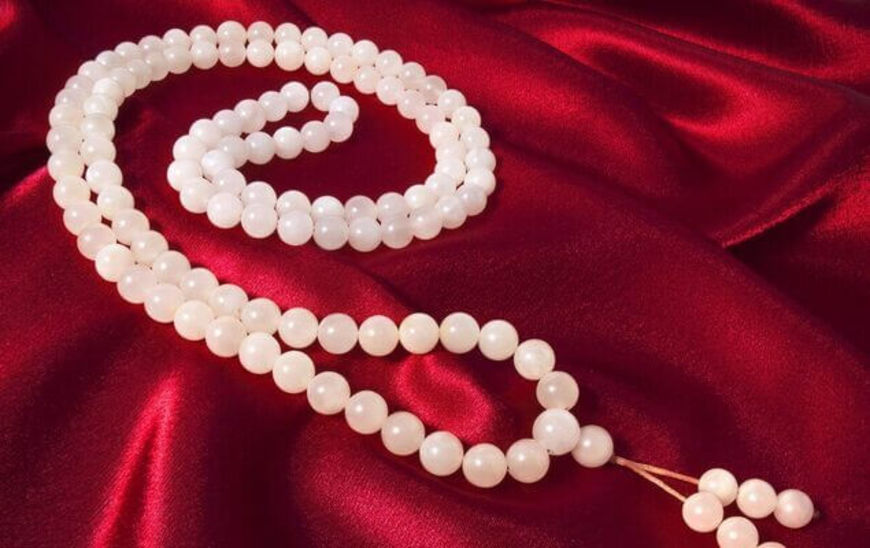Unveiling the Therapeutic Influence of Misbaha: Rosary Beads in Islamic Traditions
- About
- Blog
- Dictionary
- Staff
- Partners
- Executive Committee
- Advisory Board
- The best beaches on Costa Blanca
- Succinic acid. Amber powder. Amber oil
- Youth Mental Health: The Importance of Social Support
- Tutoring: A Key to Success for At-Risk Youth
- Racial Inequality and Youth Crime
- Motivating At-Risk Students for Higher Education
- The Influence of Peer Pressure on At-Risk Youth and its Implications
- Juvenile Recidivism: Addressing the Factors and Finding Solutions
- The Impact of Trauma and Adverse Childhood Experiences on At-Risk Youth
*Much of the information contained in this article is taken from the yantar.ae
Rosary beads, known as Misbaha in Arabic, hold a significant place in Islamic traditions beyond their religious symbolism. These strings of beads, often used for repetitive prayers and remembrance of God, carry a deeper therapeutic influence that spans physiological, psychological, and spiritual realms. In this article, we explore the multifaceted impact of Misbaha and how it resonates with ancient wisdom, providing diverse therapeutic benefits for individuals across cultures and backgrounds.

Physiological Impact
When using Misbaha, the act goes beyond just spiritual significance. It may positively impact our physical well-being too. The repeated motions of fingers passing over beads induce focused attention and relaxation, similar to meditation practices. This repetitive action links to decreased heart rates, lower blood pressure values, and reduced stress hormone levels. Studies indicate Misbaha engagement activates the parasympathetic nervous system governing the body's rest and digest responses. This promotes feelings of calm and overall well-being. Moreover, the tactile sensations from the beads stimulate acupressure points tied to relaxation and stress relief, further enhancing Misbaha's therapeutic effects.
Ancient Wisdom Resurfaced
The use of prayer beads predates Islam, with roots tracing back to ancient civilizations such as Hinduism, Buddhism, and Christianity. In adopting this practice, Islam not only incorporated a tool for spiritual devotion but also tapped into a reservoir of ancient wisdom regarding the therapeutic benefits of repetitive prayer and meditation. Across cultures and throughout history, prayer beads have been revered as instruments for focusing the mind, deepening one's connection to the divine, and attaining inner peace. By embracing this tradition, Muslims honor the wisdom of their ancestors while reaffirming the timeless relevance of practices aimed at nurturing the body, mind, and soul. In essence, Misbaha represents a convergence of ancient wisdom and contemporary spirituality, bridging the gap between past and present in pursuit of holistic well-being.
Diverse Therapeutic Influence
The therapeutic influence of Misbaha extends beyond its physiological effects to encompass psychological and emotional well-being. For many practitioners, the act of reciting prayers while moving along the beads provides a sense of calmness and inner peace. This repetitive ritual can serve as a form of self-soothing, particularly during times of anxiety, grief, or uncertainty. Moreover, the rhythmic nature of Misbaha recitation can facilitate mental clarity and focus, aiding in stress management and emotional regulation.
In addition to its individual benefits, Misbaha also fosters a sense of community and connection among believers. Group recitations, where individuals gather to pray together using their rosary beads, create a supportive environment conducive to spiritual growth and mutual encouragement. This communal aspect of Misbaha reinforces social bonds and promotes a shared sense of purpose and belonging.
Practical Applications for Well-being
Misbaha, or the use of prayer beads, can be very helpful in many non-religious situations too. It can help people feel calmer and more relaxed. For example, Misbaha can be used in meditation and mindfulness exercises. The beads give the mind something to focus on, making meditation more effective. Misbaha is also useful for managing stress. People can carry the beads with them and use them to relax whenever they feel stressed or anxious. Repeating the same motions with the beads can have a soothing effect.
Even though Misbaha comes from religion, the ideas behind it can be helpful for anyone. Things like repetition, reflection, and letting go can be good for personal growth. People from all backgrounds can benefit from these practices. They don't need to be religious to use techniques like Misbaha. The benefits of Misbaha, such as reduced stress and improved focus, can help many people. It allows people to explore meditation and mindfulness in their own way. With an open mind, the therapeutic advantages of Misbaha become available to everyone.
In conclusion, Misbaha serves as more than a religious artifact; it is a potent tool for healing and self-transformation. Through its rhythmic recitation and symbolic significance, Misbaha offers a pathway to inner peace, spiritual connection, and holistic well-being. As we delve deeper into the therapeutic influence of these sacred beads, we uncover a timeless wisdom that transcends culture and creed, offering solace and guidance to all who seek it.




